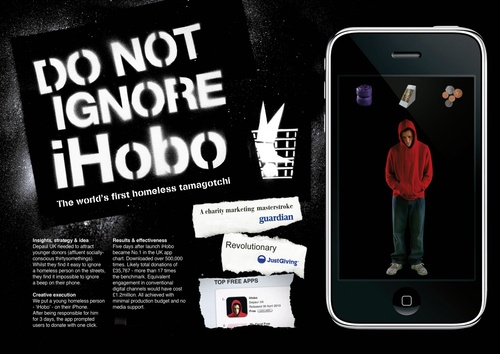-
Youth Homelessness

I don't know you but I'm more and more stricken by the growing number of young people living in the streets with their dogs. Usually, I avoid looking at them. I'm not proud of it.
I watched a documentary about the phenomenon and was really affected by it. I'd like to deal with the subject in class and I found some interesting documents. I just share them with you.

The aim would be to make pupils aware of the reasons why young people "have" to live in the street. Then they would have to propose solutions (actional project) to fight against Youth Homelessness.

Videos:
Here are some facts (Causes and consequences):
A document from the National Coalition for the Homeless (NCH)
A document from Youthnoise:
(Blogged from: www.youthnoise.com)
Youth Homelessness: Facts and Solutions
- Facts
- Characteristics of Homeless Youth
- Pathways out of Homelessness
- Causes of Youth Homelessness
- Four Basic Types of Homeless Youth (Meet the Youth)
- Effective Solutions for Youth Homelessness
- 10 Needs to Prevent and End Youth Homelessness
- What Needs to Change?
Facts
If you don't personally know someone living on the streets, it's easy to pretend youth homelessness isn't a problem. It is a problem, and it affects millions of normal kids every day. It's time to wake up and pay attention.
- 1.6 to 1.7 million people under 18 will experience homelessness each year. (That's more than the population of Philadelphia.)
- The National Coalition for the Homeless defines homeless youth as individuals under the age of eighteen who lack parental, foster, or institutional care.
- 1 out of every 3 homeless people are under the age of 18.
- Approximately half of all runaways were physically abused before fleeing home.
- The majority of homeless and runaway youth are between the ages of 15 and 17, however three out of 100 runaways are under the age of 10, and 11 out of 100 are between the ages of 11 and 13.
- Approximately half of all runaways were physically abused before fleeing home.
- A third of all runaways will attempt suicide.
- Homeless youth are up to ten times more likely to have or contract HIV than non-homeless adolescents.
- A tenth of homeless and runaway females are reportedly pregnant.
- This year, one in 260 runaways and homeless youths will die from assault, illness and suicide.
Characteristics of Homeless Youth
- No self-sufficiency skills
- No financial resourcesv
- Mental health problems; post-traumatic stress disorder
- Deteriorating physical health
- Substance Abuse
Pathways of Homelessness
The three most common pathways are:
- Parents
- Extended family
- Independent living (only after trying the other two)
Causes of Youth Homelessness
- Family breakdown: a result of dysfunctional or troubled situation
- Systems failure: mainstream programs like child welfare, juvenile corrections facilities and mental health programs. Former foster care youths are disproportionately represented in the homeless population.
Meet the Youth
There are four basic types of homeless youth.
- Fleeing/Runaway, Jamie.
- Episodic (a.k.a. Couch Surfers), Eva.
- Street-Dependent (Travelers/Squatters),Ryan
- Unaccompanied (Shelter Hoppers), Karina.
Solutions
There are three main different kinds of effective solutions:
- Early Intervention/Prevention: make sure a homelessness episode or a family separation doesn't result in long-term homelessness.
- Improve mental health and family systems.
- Intervene with Already-Homeless Youth: to reunite them quickly with their families while strengthening the families' stability
- Independent Housing Options: to help youth who will not be able to return to their families.
Some youth will never be able to return to their families; they need housing programs that provide both shelter and support to help them become self-sufficient...but each type of homeless youth has different needs:
- Jamie (Runaway) and Eva (Episodic) would benefit from early intervention, mental counseling, community-based services, and alternative family placements.
- Karina (Shelter Hopper) requires intensive family reunification services, case managers, or youth advocates or life skills training.
- Ryan (Street-Dependent) would be helped from street-based outreach and one-on-one connections; it's important for housing to provided first before tackling other issues.
10 Needs to Prevent: End Youth Homelessness
- Plan: strategies focused on ending youth homelessness
- Data: how many youth are homeless, what their needs are, etc.
- Emergency prevention: crisis counseling, family reunification services, etc.
- Systems prevention: mainstream programs that provide care and services to youth
- Outreach: programs that reduce barriers and encourage homeless youth to enter the system
- Youth housing continuum: youth shelters, transitional housing, etc.
- Services: access to funded services through mainstream programs
- Youth development: programs that engage youth in meaningful ways, building leadership and decision-making skills
- Permanent housing: supportive housing for homeless youth
- Income: assistance to homeless youth to secure income; educational and vocational programs
What Needs to Change?
Most cities focus on "reaction" solutions instead of long-term solutions. Some good interventions that are not being developed or supported enough are:
- Peer Outreach: train young people (ages 16 to 21) to go out on the street with adult outreach workers. (Homeless youth trust other youth much more easily than they trust adults.)
- Crisis Assistance Information to Youth: develop community-based outreach where young people are (like schools) to prevent homelessness.
- Better Inter-Organization Coordination: create local resource centers and/or websites that address the varied needs of at-risk youth
- Affordable Housing: increase the number of affordable housing options for young adults (ages 16 to 25).
Youth homelessness is a large problem, but by no means is it a hopeless one. If we try to understand the problem as a whole, we can begin to work toward better solutions.
Here is an interesting campaign launched to sensitize people:
More information: http://lemonsblack.com/do-not-ignore-ihobo/
Here is the description of the application you can download on Itunes:
Description
Meet the young homeless person who will be living on your iPhone for the next three days.
You’ll need to be there for him, day and night, providing food, money, warmth and support. He’ll alert you when he gets into trouble or needs your help. And the speed of your response could be the difference between him making it through in one piece, or becoming addicted to drugs.
Depaul UK is the largest youth homeless charity in the UK. For more information go to www.depauluk.org Tags: youth, homeless, homelessness, are, that
Tags: youth, homeless, homelessness, are, that
-
Comments
I had exactly the same repulsion because I had the feeling that it suggested you had power over the Ihobo, that it was quite patronizing. In fact it makes you understand that you have the power to do something to save someone's life. I think I'll deal with it in class next year :)
3Loïs VSaturday 14th May 2011 at 19:36Wow... That's just... Well it make think a lot. I'm really affected by the stuff you posted, particularly the young homeless person's portraits telling their story. All this informations and campaigns are really effective, we really need to act, I noticed most of this youth have familial problems, many are abused. I think an efficient way to prevent youth homlessness would be to help the teens who know this kind of problems, they need to be put under protection, to be offered another place to live. It's really revolting to see all this facts. This really changed my week end you know, I was complaining because of the Bac and the work we have to do, well that was so selfish ! I realize I just have the chance to have a roof.
As I said, it makes think a lot.
4Amel.fSaturday 21st May 2011 at 22:09those adds are very interesting and well, i'll say efficient. the three first ones make us think about the fact that we pay more attention to objects, superficial things, than human being, human's life. we can see the "possibilities", the "promises" and the potential" of a chair a plant or any other stuff but we cannot see this of a homeless youth when we see him in the street.
About the ihobo, at first i thoughtit was horrible to compare human being to a toy, but at the end i saw and i anderstood that it was a good application for smart phone in order to make them aware about how frail a homeless's life can be and how easily his life can change when we don't care about them.
to conclude i agree with Mr CIA and Mr Brot

 Suivre le flux RSS des commentaires
Suivre le flux RSS des commentaires
 Add comment
Add comment
A blogstorming experience that will blog your mind







Amazing how an app can change the way we see things.
First the tamagotchi aspect repulsed me but at the end of the video, I was convinced the app was the right trick to make people understand and donate. It's amazingly creative and effective.